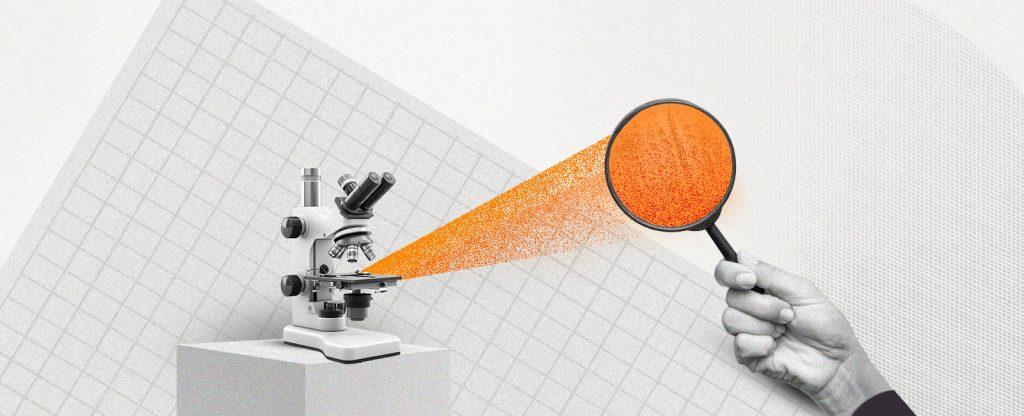The potential of regulation to become preventative in its focus, rather than reactive, has been of great interest to policy makers for some time. Professor Malcolm Sparrow at Harvard has been especially influential in thinking in how we might achieve that – how we might direct more resources into stopping harmful things from happening, and consequently less into retrospective remedial action. This resource includes, in particular, the “cost of fitness to practice proceedings” as they are known in the UK – elsewhere, complaints and disciplinary processes.
The benefits of prevention are potentially many. The first of course is the protection of patients, users of health and care services, and those close to them. But there are other harms when things go wrong at work: damage to a professional’s career, the potential loss of a member of the workforce, the impact on a workplace where harm has occurred, and the reputational damage to a healthcare organization and consequently to other patients’ trust in the care received there.
Despite having been in this world of regulatory policy for some time now – nearly 15 years – I had always found the model presented by Sparrow a little difficult to bring to life. In theory, I got it: look at the contributory factors that convene when a harmful event occurs. Who are the actors and what is their intent? Who is vulnerable? Look at how the event could be sabotaged.
However, I struggled a little to think about how a real harmful event, or more broadly harms of a particular kind, could be thwarted in this way. Therefore, I couldn’t quite bring into focus how we might interpret these ideas for the benefit of professional regulation. Maybe I had been in the fortunate position of not having been close enough to harm (or to an obvious near miss) to really bring it home.
Well, home it came one afternoon three years ago, and I’ve never struggled since.
A perfect storm of practical hazards
It was an unusual weekday afternoon at our home in London. Builders were on site preparing the foundation for an extension on the back of the house. I was not at the office as I had recently had abdominal surgery and was recovering at home: sore, grouchy, and tired. The concrete mixing lorry was parked outside, and an enormous, dirty pipe had been run through the house from front to back to pump wet concrete through to create the new foundation.
The front door was standing open, with builders coming and going, few of whom I seemed to recognize. It was raining heavily, and the rain was blowing into the house. There was much shouting and noise as liquid concrete pulsed out of the pipe forming a smooth grey lake that would set over the next few days to become the new foundation.
The other fellow on this scene who I have not yet mentioned was our cat, Henry. This little delight is a tuxedo cat of a generally amiable temperament. He is also blessed with the curiosity for which his kind is renowned. And that day looked like it might be about to prove the truth of that old adage on that point.
Henry had been shut away in a bedroom through the day. Later in the afternoon, the builders left and took all their apparatus out with them. I started to relax a little and went to check Henry was OK, but when I left the room, I must not have closed it behind me properly. For, a few minutes later, when I had opened a window to behold and admire the shimmering wet concrete’s glossy smoothness, Henry was suddenly behind me, then on my shoulder, and then leaping through the window headlong to what seemed a certain and awful demise.
In a dark place of horror, I rushed around to a door that opened onto the grey lake of death, to see if fishing him out was even possible, or if he was to be entombed for ever. What a talking point that would be with future guests – “where you’re standing now…”
What I found was pitiful, but not terminal – he had sunk only up to his stomach and was floundering about in distress. I was able to fish him out without going into the mire myself, but he instantly sprang from my grasp. He went into the house at least, but then proceeded to run about spreading the wet concrete over floors, carpets, well… everything.
In moments of acute crisis, we step outside the normal passage of time – it is as if time stands still and enables us in the most brutally calculating and efficient way to decide how to act. Priorities: save the cat; save the new concrete floor; save the rest of the house; save myself, in that order. Henry was recaptured and subjected to a cold shower which he endured with a forbearance that suggested my calming words to him might have had some effect, for once. After a vigorous toweling he was shut (firmly) back in the bedroom while I attempted to smooth the ravaged surface of the new foundation. Thereafter began the miserable clean-up of the house and finally of myself.
I cannot claim that regulatory learning was uppermost in my mind for a while. However, as is so often the case, it was not long before the terrible experience came to be seen through the lens of “How Can I Learn from This,” if only to remedy the harm that had been caused to my self-esteem. And I found that I was using the Sparrow way to work out what went wrong and how I might prevent it from happening again.
What were the contributory factors here? Certainly, Henry’s agency as a curious cat, intent on exploring the unusual and disliking incarceration. We could add the enabling effect of the chaotic home scene, and also of my diminished ability to stay on top of things, anticipating risks and consequences, because of my mental and physical state. That day I had been thoroughly hazed by all the noise and the cold and the tide of people and stuff in and out of my home.
But this wasn’t going to happen again; this was a singular mix of circumstances. Surely there’s unlikely to be a next time when building work like this is going on while I’m recovering from surgical intervention and the cat makes a break for freedom. To try and prevent a specific thing from happening again is to fall into the habit that we have often seen in regulatory reform: changing things to prevent a repeat of the exact harmful thing that just happened. How instead can we look forward, and prevent future incidents of harm, without knowing exactly where or how these will occur? Therein lies the rub.
To try and prevent a specific thing from happening again is to fall into the habit that we have often seen in regulatory reform: changing things to prevent a repeat of the exact harmful thing that just happened.
How do we aggregate the causes of our problems?
In The Character of Harms, Malcolm Sparrow describes a teaching exercise, a fictional case study involving a public official being charged with reducing the number of road traffic accidents. The obvious starting point, of course, is to look at data on what has happened before. He uses the term aggregation to describe how we can group together different cases with similar features. The fictional scenario includes a brilliant data analyst who identifies four aggregations accounting for most fatalities: accidents at rural junctions; teenagers in parents’ cars at night; slippery roads in summertime; and small children improperly restrained. Critically, these different aggregations then provide the cues for different preventative actions: for example, to prevent teenagers taking their parents’ cars at night, a suggestion is a media campaign exhorting parents to take their car key to bed at night. It would only take one “key” factor like this to be addressed to sabotage the whole situation.
I might therefore think of Henry’s near-catastrophe in an aggregated way (admittedly, despite the absence of other incidents with which to aggregate) as “risk of pet injury resulting from novel and poorly controlled hazards in the home.” This would then allow thinking about preventative strategies to take in a much wider range of potential harmful incidents, while at the same time focusing on the critical hazardous components of feline curiosity, the diminished vigilance of an overloaded owner, and the different ways in which new things might hurt the cat. This is the balance to strike in aggregating, between the specific and the general. Going too far in either direction makes it impossible to apply learning to new and different situations in a meaningful way.
At this time, overloading alone is surely a major risk factor in many workplaces and of course in particular in organizations delivering health and care; and in people’s lives as we have all adapted to the demands of the pandemic and the challenges that this has placed on our health. Regulators have an important role in monitoring the effects of these challenges and reporting on their impact on the concerns and complaints that are brought to their attention.
At another point, Sparrow discusses the points at which sabotaging action can be taken, and the effects of timing on the ability of the saboteur to claim credit for having prevented harm. In short, the earlier the sabotage, the less obvious the impact, but the lower the risk. Leaving things later is a risky business – if the sabotage works, the credit may be greater, for the harm was coming into view before it was stopped. If the sabotage is ineffective the harm may materialize, and what might have been credit will rapidly be converted into blame.
Sparrow uses a diagram to make this point, which with apology I’ve adapted as below. I’ve done so to try and set out what might be called a Sparrow view on everyday events, as opposed to only those leading to harm.

In daily life, we mostly circulate around in the green zone – there are hazards in our environment (home, work or wherever) including ourselves. They are generally controlled well enough. Sometimes, things may drift into the amber. Take, for example, the moment when a health care worker becomes disaffected or run down and begins to notice opportunities to exploit patients and thinks about doing so. Of course, there are many ways in which the budding harm may be arrested – a colleague may notice the disaffection, and with a friendly and supportive chat pull the potential abuser back into the green, for a while at least. Most rarely, the different circulating hazards will begin to align and take things into the red zone, and possibly all the way to harm if nothing stops them.
So the challenge is to aggregate events in a way which points to preventative actions – and to use the insights of aggregation to pull people out of the amber and back to the green. And there are potentially many ways to aggregate. I offer the example of work that the Professional Standards Authority commissioned on sexual misconduct. Professor Rosalind Searle of Glasgow University produced a report building on insights from Counterproductive Workplace Behavior theory for which she assessed records from thousands of fitness to practice cases, and aggregated by four types of perpetrator, thus:
“a category of instrumentally-focused perpetrators (bad apples) operating as sole agents; the second group is characterized as follower-based action in which individuals’ wrongdoing has a clear social dimension emanating from learning and transfer from key others, and involves the normalization of misconduct, and thus the erosion of perpetrators’ moral compasses (corrupting barrels); the final category is typified by a different set of antecedent processes, and central here is the accumulative erosion of individuals’ resources through stress or resource depletion, and therefore misconduct emerges through omission and error (depleting barrels).”
Clearly, to sabotage the harm caused by these different kinds of perpetrator would require very different preventative strategies, which Professor Searle goes on to examine.
Applying lessons learned for preventive regulation
Thinking in this way about hazards, harms, and staying safe can easily become habitual, not least because it can be applied to virtually any situation in life. There’s a long way we could go with applying this to the daily realities of regulatory work, and much that could be gained if we did. Perhaps it’s a testament to the power of the case study that I have described here that Henry thrives still and has in fact been on my lap for much of the writing of this article. It’s like he knew.








